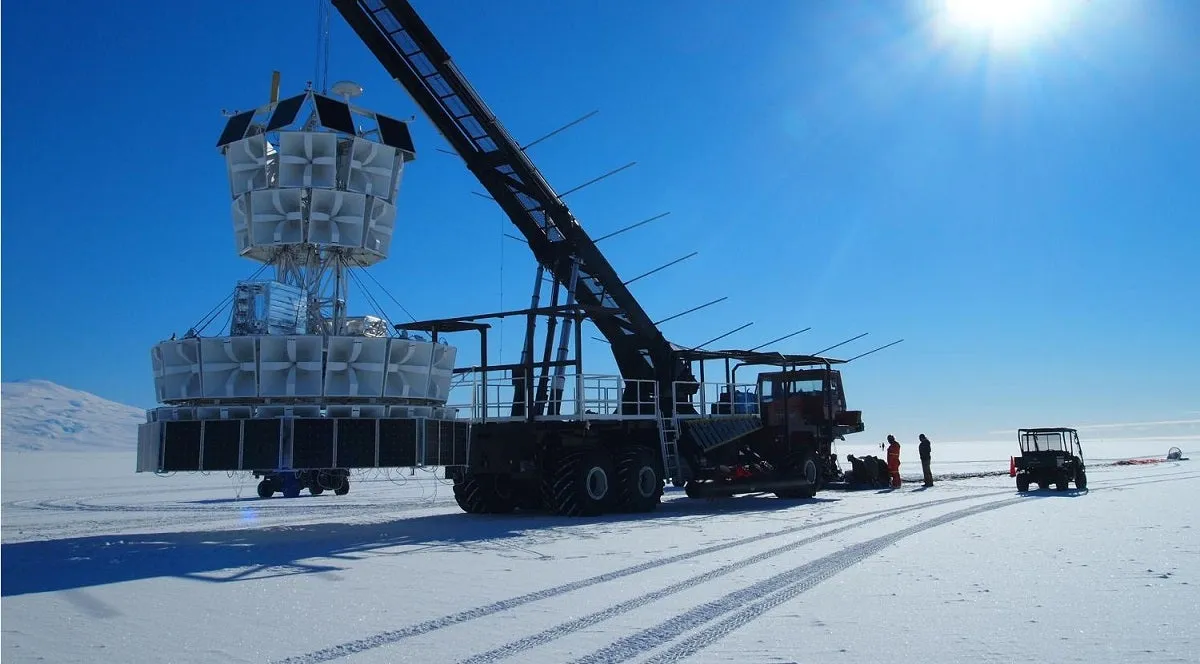
Researchers from the University of Pennsylvania have made a groundbreaking discovery: unexplained radio signals emanating from beneath the Antarctic ice. Utilizing a sophisticated cosmic particle detector, these scientists have stumbled upon signals that defy existing theories in particle physics, raising intriguing questions about their origin and nature.
The remarkable signals were detected by a unique instrument known as the Antarctic Impulsive Transient Antenna (ANITA), which is ingeniously suspended from a series of balloons. This innovative setup primarily focuses on detecting particles that are reflected from space onto the ground. However, the recent findings are particularly puzzling because the signals appeared to be originating from below the horizon, contrary to the instrument's typical function.
Stephanie Wissel, an associate professor of physics and astronomy at Penn, was a key member of the ANITA team. She explained that the researchers were initially searching for neutrinos—subatomic particles that lack electric charge—when they discovered these perplexing radio waves. "The radio waves that we detected were at really steep angles, about 30 degrees below the surface of the ice," Wissel remarked in a recent press release.
The findings have been meticulously detailed in a new paper published in the journal Physical Review Letters. However, the researchers candidly expressed their confusion in the press release. Wissel noted, "We still don't actually have an explanation for what those anomalies are, but what we do know is that they're most likely not representing neutrinos." This uncertainty is particularly striking given that neutrinos are abundant in the universe, typically emitted from high-energy sources like supernovae or particle accelerators.
Detecting neutrinos is notoriously difficult because these particles rarely interact with other matter. Wissel elaborated, "You have a billion neutrinos passing through your thumbnail at any moment, but neutrinos don't really interact." This presents a double-edged sword; if particles are detected, it implies they have traveled vast distances without interacting with anything else, potentially originating from the edge of the observable universe.
Upon comparing ANITA's readings with data from other neutrino detectors, the team felt increasingly certain that they were witnessing something entirely different. Wissel speculated, "My guess is that some interesting radio propagation effect occurs near ice and also near the horizon that I don't fully understand, but we certainly explored several of those, and we haven't been able to find any of those yet either." This ongoing enigma points to the long-standing mysteries still present in particle physics.
As ANITA approaches its 20th anniversary, plans are underway for the development of a more advanced balloon-borne detector called the Payload for Ultrahigh Energy Observations (PUEO). Collaborating with NASA, Penn State, and other institutions, this new instrument promises enhanced sensitivity and improved capabilities for detecting smaller particles. Wissel expressed her excitement, stating, "In principle, we should pick up more anomalies, and maybe we'll actually understand what they are. We also might detect neutrinos, which would in some ways be a lot more exciting."
The discovery of these strange radio signals in Antarctic ice has opened a new chapter in the exploration of particle physics. As researchers continue to investigate these anomalies and develop more sensitive detection instruments, the scientific community eagerly awaits further insights that could reshape our understanding of the universe.
For more on Antarctic research, check out our article on the recent controversies surrounding Antarctic glaciers and ice piracy.